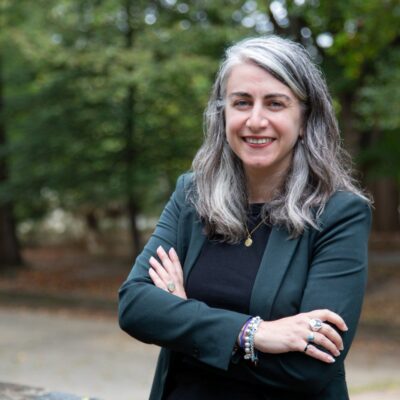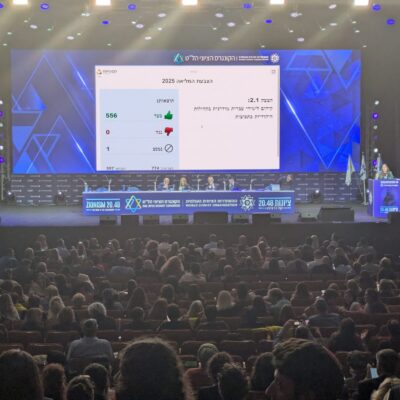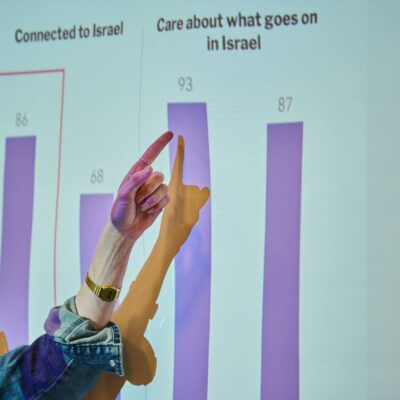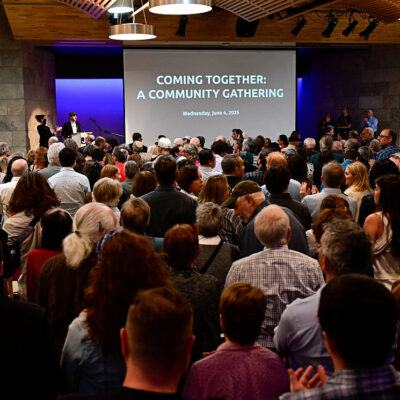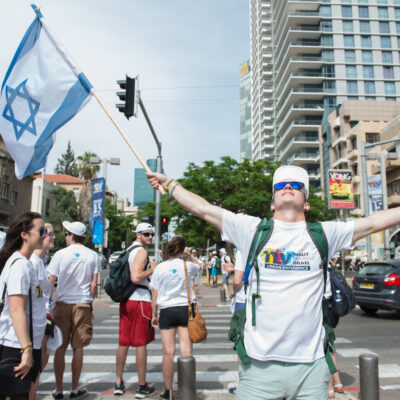Opinion
BEST PRACTICES
A culture of relationships, driven by data
This article is the final installment of a three-part series for eJewishPhilanthropy on Gather, Inc.’s relational engagement strategies to jump-start and sustain the Jewish community in response to changing demographics and interests.
Previously, we shared examples of Gather, Inc.’s strategies for relationship-based engagement, and explored how you can adapt these models to deepen connections between your community members. Building relationships is one essential piece of our organization’s work — but how do we evaluate whether the time and energy we are investing is in fact benefiting the community we aim to nurture? How do we measure our impact and evolve best practices for the specific people in our spaces?
In our final article of the series, we turn our attention toward evaluating the impact of engagement work with useful, easily collectible data. We will explore this methodology more in our Community of Practice this summer, but are excited to share some of the tools here with eJP readers.
Our teams at Gather, Inc. often return to the following text from the Mishnah:
“These are the things that have no measure: the corner of the field [whose produce must be given to those in need], the bikurim [first fruits of the growing season, which are given to the priest], the appearance-sacrifice [at the Temple in Jerusalem during the three pilgrimage festivals], acts of kindness and the study of the Torah.” (Mishnah Peah 1:1)
As Jewish professionals, there are so many aspects of our work with value beyond measure. Nevertheless, if we are going to meaningfully meet people who are newly engaging or reengaging in Jewish life in the wake of Oct. 7 and rising antisemitism — aka “the Surge” — as they enter our spaces, congregations, programs and communities, we need to both try out new strategies for engagement and reflect on our engagement practices to ensure they are having the intended effects.
What is relational data?
It might feel counterintuitive to think about data and analysis as important components of relationship-building. How do you quantify and track your connection with another human being? When we dive deeper, though, relationship-based engagement reveals itself as a methodology deeply rooted in data.

Relational data is information we learn about our community members, record in an organized way and then call upon to help us:
1) build and deepen our one-on-one relationships,
2) “concierge” people to meaningful Jewish opportunities, and
3) strategize and develop Jewish experiences that are uniquely relevant and meaningful to our community.
In other words, relational data is essential to us practicing the three models of community building and planning a healthy heartbeat of engagement.
Using data to build community and connections
Ask yourself: What relational data will make a difference for your work? Would capturing your community members’ birthdays give your team members a new opportunity for a small beat of connection? How might recording their hobbies, neighborhoods or addresses help you make new connections between people? Could asking about and writing down people’s Jewish interests help you curate your next large beat?
We know that Jewish professionals tend to be working with limited time, energy and budgets. Our partners often share that relational data collection and maintenance feel important, but often get bumped down the list of priorities. Creating a culture of relational data represents a significant shift in practice for many organizations and individuals.
At Gather, we have found that this time is worth spending. In the long run, taking a relational approach to participant data saves time, resources and energy by enabling us to act with greater impact, efficiency and strategic precision.
Measuring success
In an ecosystem where success is often measured by the number of people in the room, centering relationships pushes us to imagine new standards of measurement. Having 100 people in attendance, while amazing, doesn’t necessarily mean that anyone will leave feeling more connected than when they walked in.
If we are to create what New York Times columnist David Brooks calls “thick institutions” — places that become part of a person’s identity and engage the whole person, head, hands, heart and soul — then capturing attendance isn’t enough. We need to retrain our attention to also capture more qualitative aspects of participant experience, such as engagement with the activity, enthusiasm about possible future points of contact or involvement in Jewish community, or emerging connections between participants.
Here’s how we at Gather might suggest getting started. (You might find you’re already doing some of these practices!)
Step 1: Design your system. Keep data beyond names and contact information in a dedicated data-collection tool or system that works for you. This can include, but is not limited to, tracking peoples’ neighborhoods, important dates in their lives, interests, hobbies and connections you’ve made between participants. You don’t need a complicated system or expensive database – even a simple spreadsheet can be a great start.
Step 2: Create your metrics of success. As you design your next “large beat” experience, decide what qualitative measures you want to track. Are you interested in whether participants talk to new people, not just the ones they came in with? Will you pay attention after the event to see what percentage of participants return for another event? Write these metrics down, so you can refer to them when you debrief the event. If you are the sole staff member running an event, it can be meaningful to do this process, even by yourself.
Step 3: Revisit your program design. As you build your metrics, consider whether there is anything in the event that you’ll need to adapt. For example, if you decide you want to track how engaged participants are by how much they talk with each other, revisit your program outline to plan in plenty of structured, guided opportunities for people to break the ice and connect.
Step 4: Unpack what you learned. Immediately after the event, take a moment to enter relational data and observations into your system. Then, meet as a team to revisit your metrics of success (or this can be done solo). For example, if one of your metrics of success was participants talking to someone new, and you saw nine out of 10 attendees speaking with a new person, that would be an impressive 90%! Shifting away from just the number of people in attendance allows us to see the interactions and experiences of the participants more clearly, as well as the impact the activity had on them.
Step 5: Make an action plan for your next experience. Talk about what you did that led people to increased engagement during your experience – as well as the opposite. Where was relationship-building not happening? Were there participant access needs that you overlooked and could plan to meet better next time? Did the experience design match your hoped-for outcomes? What could you change for the next experience you host? Based on what you learn, you might decide that you need to adjust your design or even fully reimagine your format for your next event.
We believe that what you pay attention to grows. If fostering meaningful relationships is our goal, then we need to pay attention to designing opportunities for those relationships to form, capturing relational data and measuring the success of our efforts. Meeting the needs of people newly engaging or reengaging with Jewish community will require us to shift our approaches and prioritize relationship-building in new ways, including how we evaluate the success of those efforts. Our communities are ready to engage with us — let’s make sure we’re ready to meet them.
Rabbi Gray Myrseth is the community rabbi at GatherBay. They were ordained at the Hebrew College Rabbinical School and have worked as a rabbi, chaplain and educator with people of all ages, within Jewish institutions and beyond.
Michelle Shapiro Abraham is the CEO of Gather, Inc. Her work explores the intersection of community organizing and relational strategizing as a way to reimagine Jewish leadership, communal power and individual thriving.
Sarah Fredrick is director of trainings at Gather, Inc. She leads Gather’s consulting and partnerships, collaborating with organizations to reimagine and sustain meaningful, accessible, relational Jewish communal life.

 Add EJP on Google
Add EJP on Google
